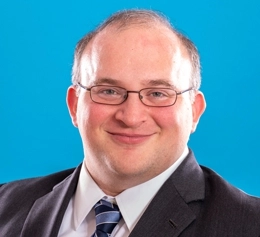After the Senate’s recent § 101 hearings, Senators Tillis and Coons seem to have remained steadfast in their belief that patentableEligible to be patented. To be patent-eligible, an invention must fall into the categories listed in 35 U.S.C. § 101 (i.e., process, machine, manufacture, or composition of matter) and cannot be an abstract idea or a law of nature. subject matter is a real problem for U.S. innovation. (It’s not.) But there’s a particular flaw in their belief. In a recent article penned by the two Senators, published in Law360, they state that because of § 101, “investors are reluctant to pursue the innovations that propel our country forward.”
The reality is that § 101 isn’t being used to eliminate those innovations—it’s being used to prevent the kinds of patents on economic transactions that Tillis and Coons claim to want to prevent. Let’s take a look at some real examples.
SAP America v. InvestPic
Last year, the Federal CircuitSee CAFC decided the case of SAP America v. InvestPic. When figuring out a patent, the claim is the place to start. Claim 1 of the InvestPic patent is:
1. A method for calculating, analyzing and displaying investment data comprising the steps of:
(a) selecting a sample space, wherein the sample space includes at least one investment data sample;
(b) generating a distribution function using a re-sampled statistical method and a bias parameter, wherein the bias parameter determines a degree of randomness in a resampling process; and,
(c) generating a plot of the distribution function.
Picking a data set, using a statistical function on it, and plotting the result. That’s it. There’s nothing here but mathematics. With the exception of a single appearance of the word “investment”, there isn’t even anything that purports to limit it to a particular area of business. If this kind of patent application were permissible, every new equation would be patent-eligible in and of itself.
That’s not what Senators Tillis and Coons claim to want, and this claim is probably ineligible under their draft proposal as well as current law. But it isn’t the only claim in the patent. Claim 22 is:
22. A system for providing statistical analysis of investment information over an information network comprising:
a financial data database for storing investment data;
a client database;
a plurality of processors collectively arranged to perform a parallel processing computation, wherein the plurality of processors is adapted to:
receive a statistical analysis request corresponding to a selected investment;
based upon investment data pertaining to the selected investment, perform a resampled statistical analysis to generate a resampled distribution; and,
provide a report of the resampled distribution.
That’s a claim from the same InvestPic patent. It’s fundamentally the same thing—a mathematical equation for displaying investment data—but it’s added a couple databases and some processors.
This probably would be found patent-eligible under the proposed legislation. Financial technology (“FinTech”) is a field of technology and there’s nothing about that claim that suggests that it would qualify as lacking human intervention. The addition of completely generic computing hardware, doing exactly the same thing as the first (ineligible) claim to pure math, has suddenly made the claim eligible under the Tillis-Coons proposal.
If this type of patent on a business method isn’t what the Senators want to allow patents on, their own proposal fails to achieve their goals. But there’s reasons to be skeptical that those are their goals.
ChargePoint v. SemaConnect
Let’s look at another patent, one that Senators Tillis and Coons themselves point to—the “networked charging station for electric vehicles” of ChargePoint.
Here’s the first claim of the first patent in the lawsuit.
1. An apparatus, comprising:
a control device to turn electric supply on and off to enable and disable charge transfer for electric vehicles;
a transceiver to communicate requests for charge transfer with a remote server and receive communications from the remote server via a data control unit that is connected to the remote server through a wide area network; and
a controller, coupled with the control device and the transceiver, to cause the control device to turn the electric supply on based on communication from the remote server.
So, that’s a switch to turn charging on and off, a modem to ask for permission to charge from a remote server, and a controller that turns the switch on and off depending on whether the remote server says yes.
That’s not a patent on a charging station. That’s a patent on remotely authorizing a service that’s been thinly disguised with a generic connection to electric vehicles. The charging station components aren’t part of the alleged innovation; they’re simply there to try to hide the fact that the patent is, at its core, a patent on a method of doing business.
This is the example that proponents of changes to § 101 point to as something they want to allow patents on. And under their proposal, this would likely be patent eligible. If the goal is to avoid patents on economic methods, the proposal fails to achieve that goal.
Developing Technologies
To justify their proposed change, Senators Coons and Tillis point to testimony that “the uncertainty surrounding patent eligibility is affecting the development of technologies like 5G, quantum computing and artificial intelligence.” The ‘uncertainty’ is over-blown. Practicing lawyers and judges are quite good at predicting the outcome of § 101 questions. Those who claim to be unable to do so are conflating dislike of the outcome with unpredictability—or they’re just poor patent lawyers.
And the testimony the Senators point to—coming from companies like Qualcomm and IBM—is self-serving. Qualcomm has historically made 80-85% of its pre-tax earnings from licensing patents. IBM derives roughly 10% of its profits from licensing activities and has a history of using its patents to extract revenue from markets after it loses to its competition. In one instance, IBM used patents from the defunct online service Prodigy against modern e-commerce sites. Given IBM’s continuing loss of market share in its largest revenue category, cloud services, it might be advocating for patents on abstract ideas to hedge against a future in which they lose out to new rivals in yet another technology market.
Here’s the reality.

Outside of China (which is investing tens of billions of dollars in government funding of AI research), the U.S. remains by far the most popular jurisdiction for AI patent applications. And that growth has accelerated in the U.S. after the 2014 Alice decision compared to other jurisdictions. This suggests that Alice has actually led to increased AI investment as companies worry less about being sued for their AI work and can spend more time and money on actual R&D.
As it turns out, when you look at § 101’s actual impacts on high tech, it’s been positive. § 101 has been getting rid of patents on processing and graphing data and on remotely authorizing purchases, not harming research into technologies like AI.
If this is the best evidence of harm from § 101, I’d say the only problem is calling it a “problem” in the first place.

